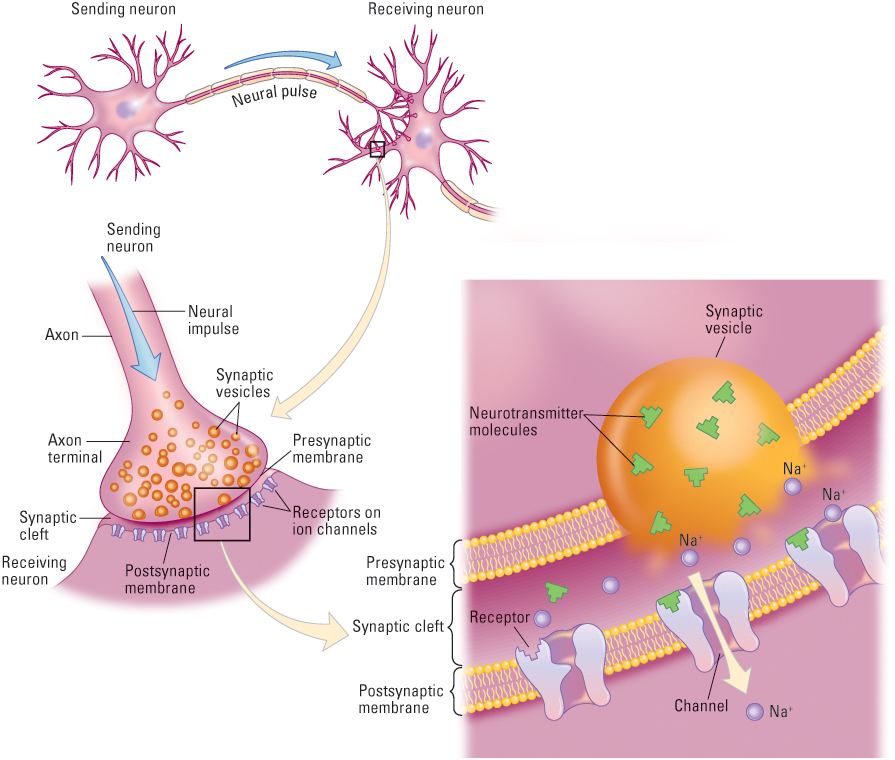
Figure 5.8 Transmission across the synapse When an action potential reaches an axon terminal, it causes some of the synaptic vesicles to spill their transmitter molecules into the synaptic cleft. Some of the molecules diffuse across the cleft and bind at special receptors on the postsynaptic membrane, where they open channels that permit ions to flow through the membrane. At an excitatory synapse (as in this example), channels permeable to sodium ions (Na+) open, allowing an influx of positive charges into the receiving neuron. At an inhibitory synapse, channels permeable to chloride ions (Cl−) open, allowing an influx of negative charges.